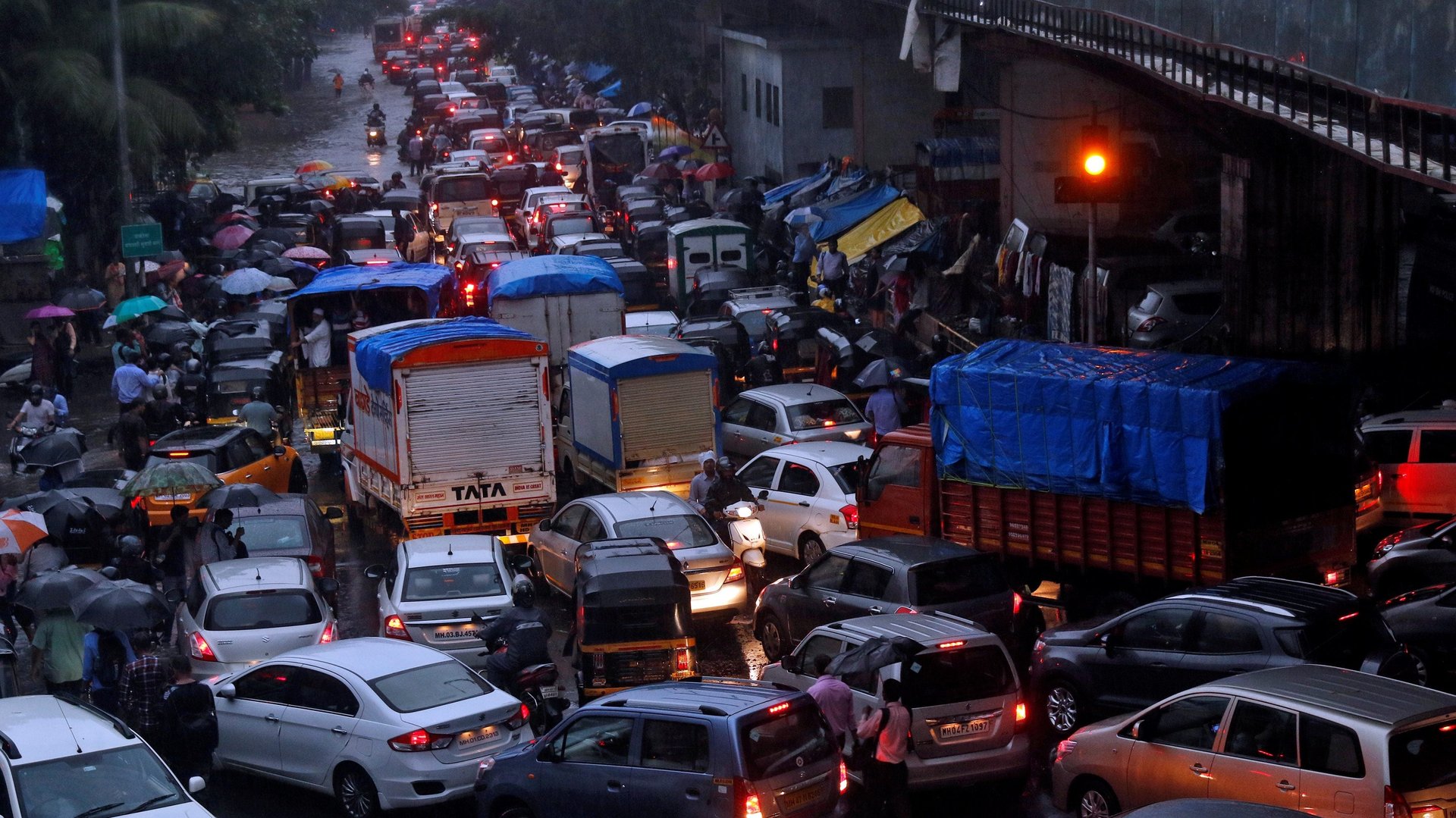How India can get autonomous cars—despite crazy drivers, jaywalkers, and cows
As global giants like Tesla, Uber, and Google take self-driving cars to the streets, Indian companies are still at the experimental stage.


As global giants like Tesla, Uber, and Google take self-driving cars to the streets, Indian companies are still at the experimental stage.
Earlier this year, local carmaker Tata Motors sought permission to test its driverless vehicle on Bengaluru’s roads. Software behemoth Infosys is training its engineers in self-driving technology. A number of Indian Institutes of Technology (IIT) are also working on such automobiles tailor-made for the country.
However, there’s been one major hurdle to self-driving technology in India: a legion of lawbreakers, from rash drivers and jaywalkers to cattle. But University of Michigan dean of engineering Alec Gallimore believes this isn’t an insurmountable problem. The technology can work in India as long as “we’re not copy-and-pasting from the West,” he told Quartz in an interview in Mumbai.
“What I can tell is, there is a method to the apparent madness,” Gallimore said. “There’s no lane discipline, but there’s a lot of other things that have taken its place because you’re getting a lot of efficiencies.” The trick is to teach the machines to follow those unsaid rules.
Lessons in driving culture
The University of Michigan has a 30-acre test bed called Mcity to test driverless and connected cars. The test can be programmed to simulate various driving environments—gravel, smooth roads, concrete, asphalt, overpasses, and tunnels—that can be tweaked to add pedestrians and traffic, among other elements.
While this works well to train cars to learn navigation, circumvent obstacles, follow road signs, and more, it doesn’t equip them for random occurrences. That needs trials in real conditions. For that, the American university is deploying driverless shuttles on its campus by mid-2018.
In India, cruising down city streets and highways may not be the go-to but local companies can try close-circuit trials within college campuses, business parks, hospitals, and other gated communities, Gallimore says. Here, the cars would be able to manoeuvre local idiosyncrasies, though not at high speeds or with tonnes of traffic that could confuse the system.
Eventually, the systems could move on to road testing along designated lanes and at fixed times. For instance, garbage collection vehicles, which usually play late in the nights or early in the mornings, could slowly go autonomous as there would presumably be fewer surprises at these odd hours.
Pilots, though, are just the first step. Putting autonomous cars to use on a large scale has its own obstacles.
The autonomy in driving
There are two ways driverless cars work: They could download information from the cloud—mapping and matching pictures of their environment to previous pictures in the system and parsing out the differences, and receiving inputs from sensors on the road. Alternatively, they could work fully autonomously, communicating with one another in real-time. Within a radius of approximately 1,500ft, cars can track each other’s movements, including their velocity, direction, and more, Gallimore explained.
India has to figure out which model works best with its dismal internet. Gallimore thinks a combination of the two would work depending on which suits the strength and latency of the network of a particular region best. And with the government pushing for 5G, the data bottleneck will likely reduce over time.
For those wary of the new tech, one way to ease them in is to make the setting optional. “So, you’ll sit on the driver’s seat, you’ll drive, but if something happens and you forget to break, the self-driving system will take over and do it for you,” Gallimore said. The technology can reduce accidents due to irresponsible behaviour like texting and driving or drinking and driving in a country where over 1.5 million people have died in road accidents in the last decade.
Meanwhile, for all its benefits, there are fears that the technology will exacerbate India’s already jobless growth. India’s road and transport minister Nitin Gadkari has vowed to ban self-driving technology which could potentially steal jobs. “Whenever there is technological advancement, jobs have been created,” Gallimore said, citing the example of India’s IT boom.
“I’m not saying I don’t worry about the jobs impact (of autonomous cars),” he added. “But am I worried enough to not develop the technology? No.”